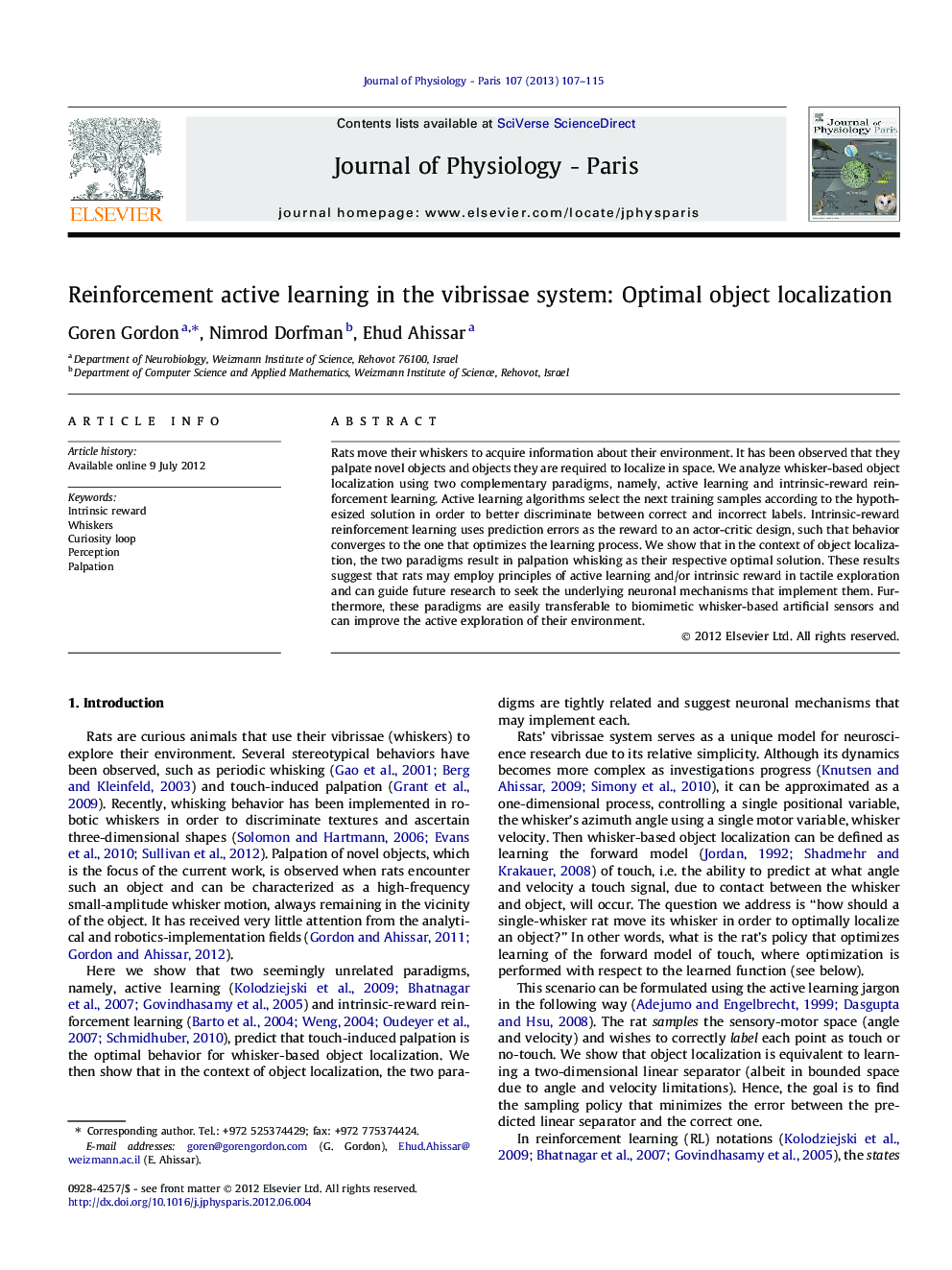| Article ID | Journal | Published Year | Pages | File Type |
|---|---|---|---|---|
| 2842198 | Journal of Physiology-Paris | 2013 | 9 Pages |
Rats move their whiskers to acquire information about their environment. It has been observed that they palpate novel objects and objects they are required to localize in space. We analyze whisker-based object localization using two complementary paradigms, namely, active learning and intrinsic-reward reinforcement learning. Active learning algorithms select the next training samples according to the hypothesized solution in order to better discriminate between correct and incorrect labels. Intrinsic-reward reinforcement learning uses prediction errors as the reward to an actor-critic design, such that behavior converges to the one that optimizes the learning process. We show that in the context of object localization, the two paradigms result in palpation whisking as their respective optimal solution. These results suggest that rats may employ principles of active learning and/or intrinsic reward in tactile exploration and can guide future research to seek the underlying neuronal mechanisms that implement them. Furthermore, these paradigms are easily transferable to biomimetic whisker-based artificial sensors and can improve the active exploration of their environment.
► We model object localization via whisker movements. ► Active learning and intrinsic-reward reinforcement learning paradigms are compared. ► Object palpation, an observed behavior, is the optimal policy in both paradigms. ► An analytical relation between the two paradigms and a biologically plausible neuronal network implementation are presented.
